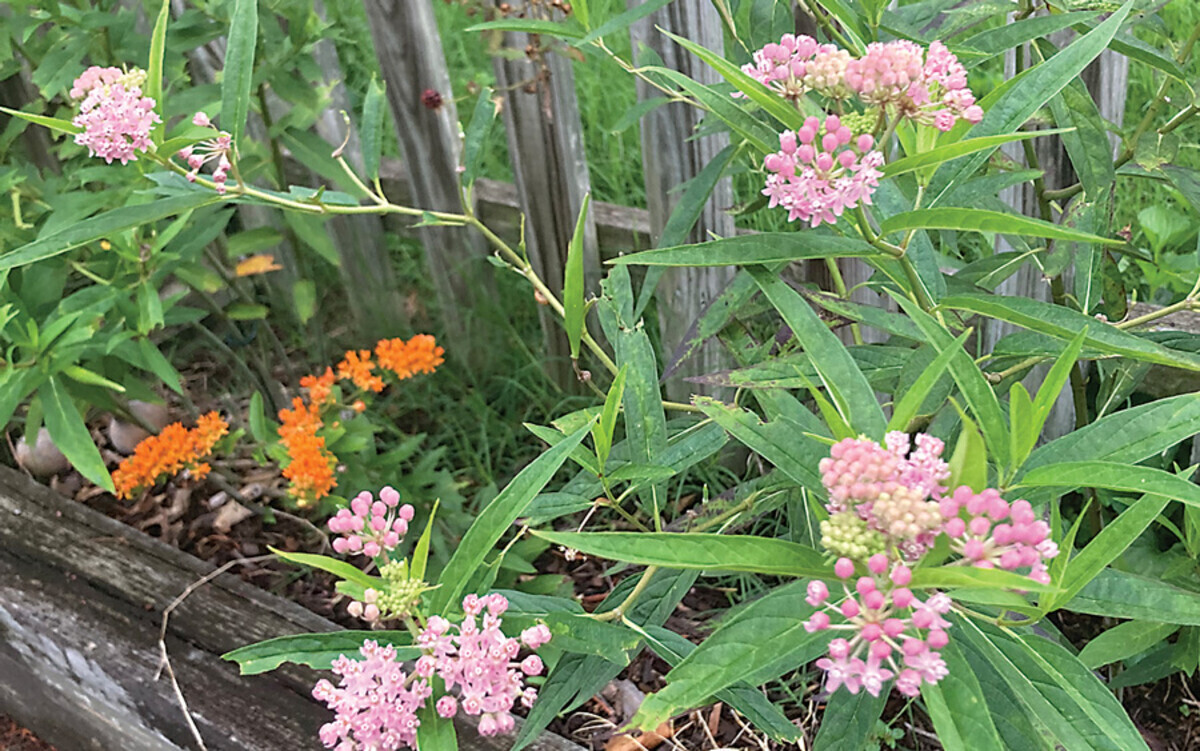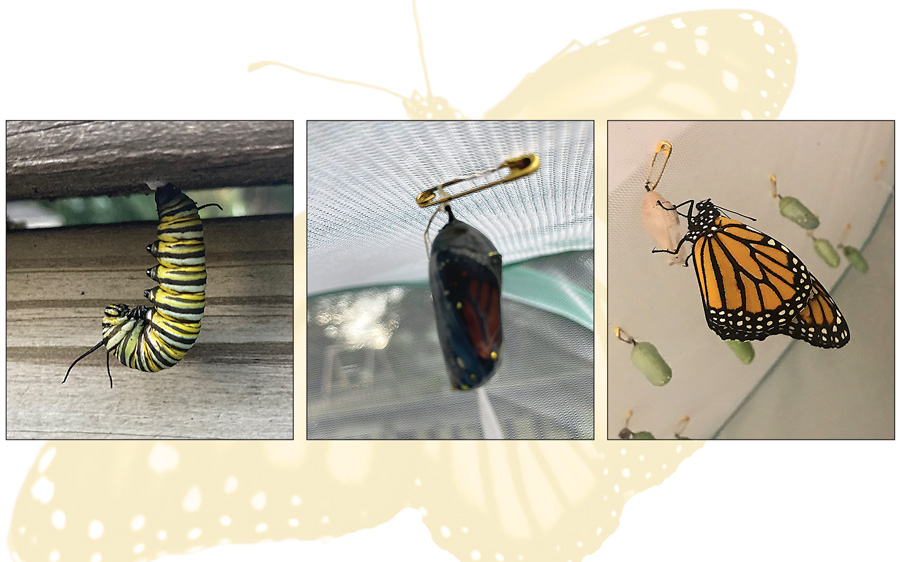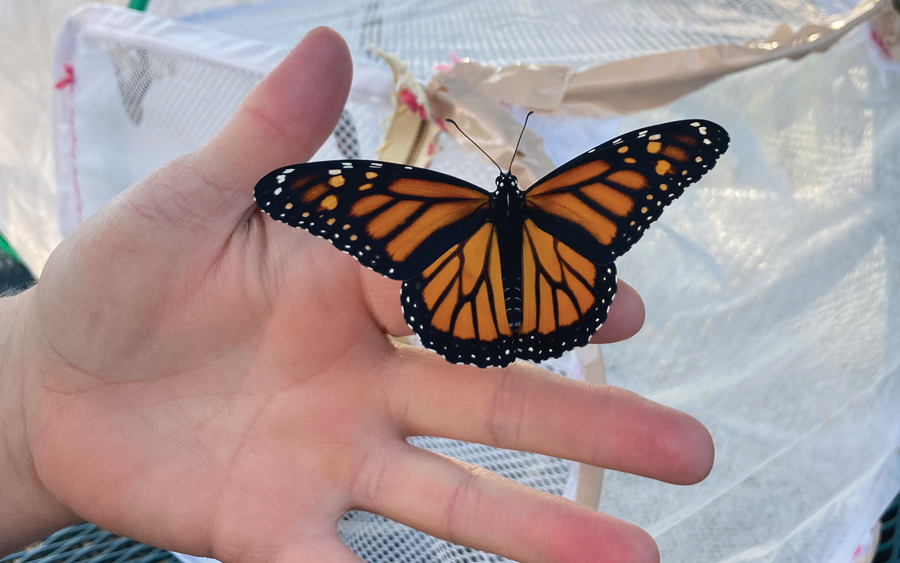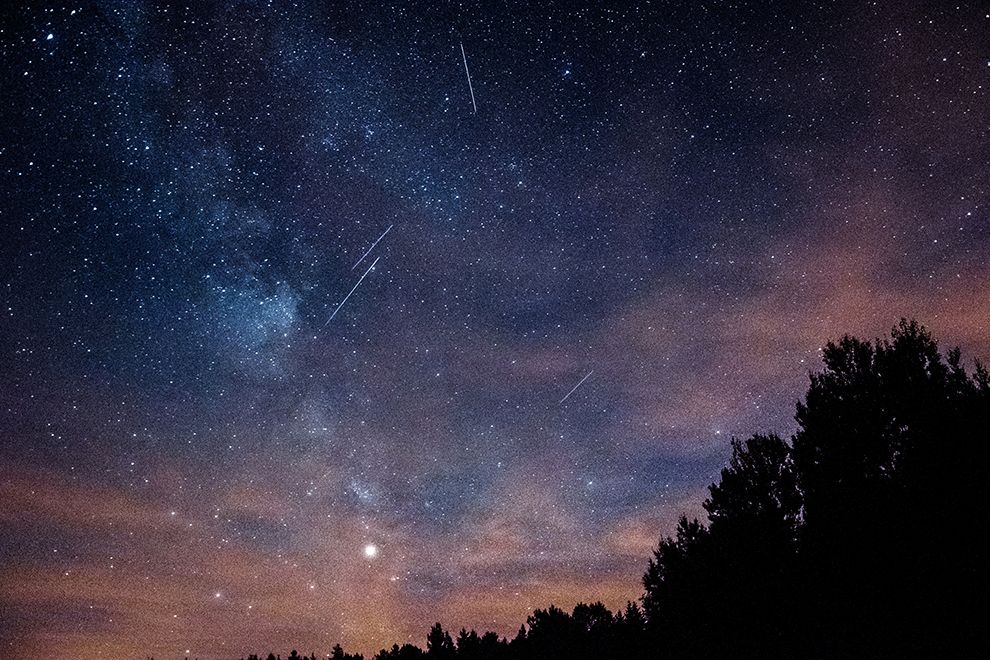Toward the end of summer in Central Virginia, little orange fluttering travelers will make their appearance. Monarch butterflies are on an annual journey and reproducing wherever they can, so they can make it to Mexico for the winter.
A few years ago, my younger daughter and I embarked on a mission. We stealthily collected caterpillars that had made chrysalises. We have had monarch caterpillars before, but that summer was the first time we collected chrysalises after we saw one in a precarious location. We collected about two dozen, and after a couple of weeks, we released more than twenty monarchs that had gone from hungry caterpillar to “J” position to chrysalis to finally emerge as butterflies.
Recently monarchs were added to the endangered species list. This designation should be a real wake-up call. Monarchs are one of the most recognized butterflies in the United States, and they are in trouble. Their numbers in Mexico and other places have dwindled substantially. But hopefully, they are not too far gone to resurrect. I can’t imagine not seeing those orange and black wings on summer breezes as they wind their way around our yards, gardens, and outdoor spaces.
I am no expert, but in doing research to help the monarchs, I have learned a few things:
1. The single best thing we can do for monarch butterflies? Plant milkweed in the spring.

This is the only plant that monarchs lay eggs on and the only plant their caterpillars munch. It once grew wild all over North America, but due to deforestation, it’s a disappearing plant.
There are several species native to Virginia, including common milkweed, swamp milkweed, and butterfly weed. All are perennials and should come back spring after spring.
Tropical milkweed is not native to Central Virginia, but it grows very well here. After the first frost, it’s important to cut back tropical milkweed to thwart a parasitical infection (ophryocystis elektroscirrha) that spreads as monarchs feed and poses no danger to humans. An infected monarch can infect the milkweed, which in turn infects the monarchs that come to feed or grow up on the plant. When the milkweed dies in the fall (or if it’s cut back), the infection is controlled.
Monarchs are not the only things that love milkweed – bees and hummingbirds do as well. And the flowers are pretty.
2. You really can’t go wrong with any native flowering plants.
The nectar in flowering plants will attract butterflies and bees to your outdoor space. You might even attract some hummingbirds. Planting milkweed and giving monarchs something to eat will ensure they discover your yard.
3. To save monarch butterflies, please be cautious when using pesticides.
Yes, spraying for mosquitoes might seem like a good idea, but does the spray really discriminate between pollinators and mosquitoes? To control mosquitoes, patrol your property once a week and dump standing water. This breaks the larval cycle. For water receptacles you don’t want to dump, like rain barrels, use mosquito dunks to target the mosquito larvae.

4. Give monarch butterflies a welcoming habitat.
Trees and shrubs are great places for butterflies to rest. A butterfly house might also make a good siesta spot. If you’re feeling extra nature-compassionate, it’s easy to make a butterfly waterer. A flat pan and some stones will do. You can either hang it or put it on the ground and keep it filled with water. To limit mosquitoes, dump it out weekly. You might also put dirt or sand in a flat pan with some rocks or small tree branches and keep it moist. Or do the same thing in a small space in your yard – butterflies really like this approach.
Though my daughter and I had fun and learned a lot doing what we did for monarchs that summer, we did damage at least two chrysalises while collecting them. It takes twenty-four to forty-eight hours for hardening to complete, and they are still fragile after that, so we had to handle them all with care. The newly emerged butterflies can fly once their wings lengthen and start to flutter, but holding on to them for twenty-four hours allows the monarchs to build up their strength. If it’s longer than twenty-four hours, you have to either rig up nectar for them or give them fruit (like cantaloupe and watermelon), which they can access without getting their legs sticky.
Yes, taking a new monarch out of an enclosure, perching it on your finger, and letting it take flight on a breeze is a wondrous thing. But you don’t have to nurture butterflies from the chrysalis to help this important cause. It’s more important to take the simple steps noted here to create a pesticide-free habitat with plenty of milkweed, flowering plants, waterers, and places for butterflies to rest and hide.
These are all important things we can do to help the monarch live on for future generations. Please join me and my family in making the effort this spring.





